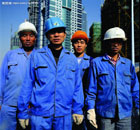Top News
Mainland, Macao economic partnership a boost for growth
(Xinhua)
Updated: 2009-12-16 17:54
 |
Large Medium Small |
BEIJING: The "Closer Economic Partnership Arrangement" (CEPA) between the Chinese mainland and the Macao Special Administrative Region (SAR) has greatly boosted Macao's economic growth since 2003, China's Ministry of Commerce (MOC) said in a report Tuesday.
"Economic and trade exchanges between the Chinese mainland and Macao had been on the rise after the two sides signed the CEPA and its six additional agreements, thus bringing Macao's economic development to a new high," according to the MOC report issued in the run-up to the 10th anniversary of Macao's return to the motherland.
| ||||
The CEPA has reduced or removed barriers in exchanges between the Chinese mainland and Macao in various economic sectors including trade, finance, service and the tour industry, thus facilitating the flow of capital, goods and human resources, according to Francis Tam Pak Yuen, Secretary for Economy and Finance of the SAR government.
After the CEPA took effect in 2004, the Chinese mainland imposed zero tariff on 273 commodity items "made in Macao." That year, the trade volume between Chinese mainland and Macao reached $830 million, a 25 percent increase year on year.
Since 2006, all commodities manufactured in Macao enjoyed zero-tariff treatment.
"To Macao, the CEPA doesn't only mean saving tariffs, but also means finding its way to the 1.3 billion-people market in Chinese mainland. Besides, it has also facilitated Macao's industrial restructuring," said Tam.
The Chinese mainland is currently Macao's largest trading partner and import source, as well as the third largest export market, according to statistics from the MOC.
The trade volume between Chinese mainland and Macao in 2008 totaled $2.91 billion, more than triple of that in 1999.
In addition, the Chinese mainland was also Macao's third largest investor by September 2009, with a non-financial direct investment of $623 million.
In the financial sector, with the approval from China's central bank, 14 out of 22 eligible banks in Macao have started providing RMB services, including deposit, exchange, bank card and remittance business. By the end of October, 2009, RMB deposit in Macao reached 1.77 billion yuan.
At the end of 2008, the Chinese mainland has also taken various measures under the CEPA to help Macao deal with the global financial crisis.
"The CEPA and its additional agreements signed afterwards have helped broaden the platform for Macao's development," said Su Tim Peng with the Macao Economic Services.
"They have greatly boosted economic integration and mutual development of the Chinese mainland and Macao," he said.











